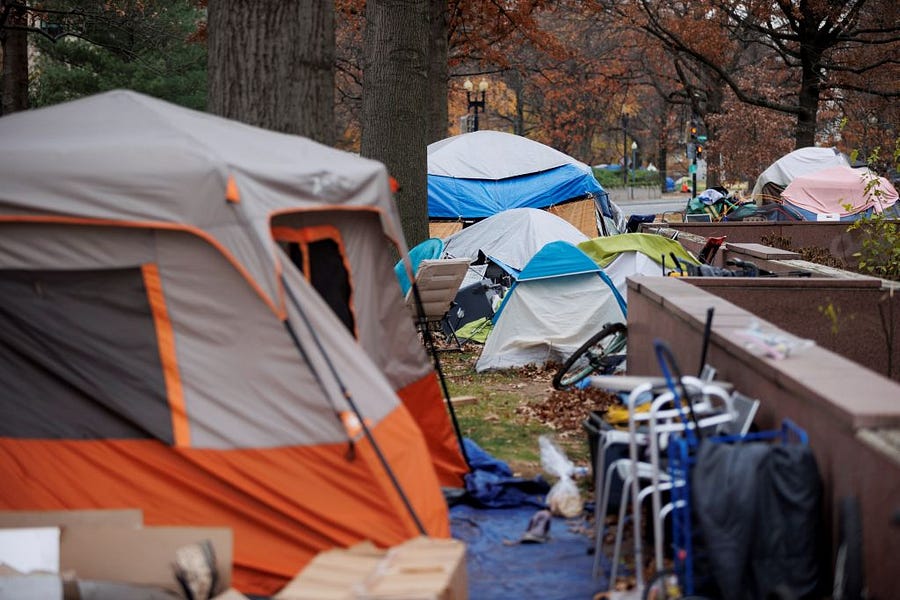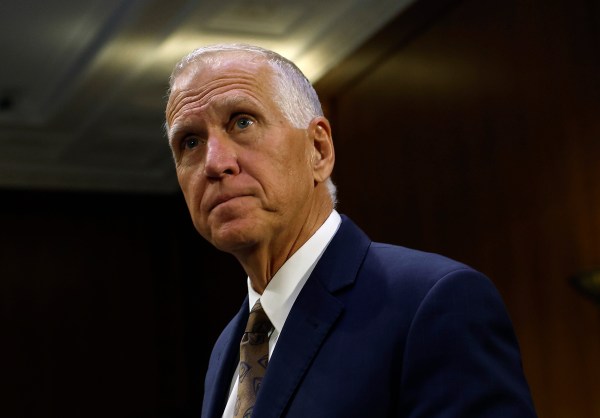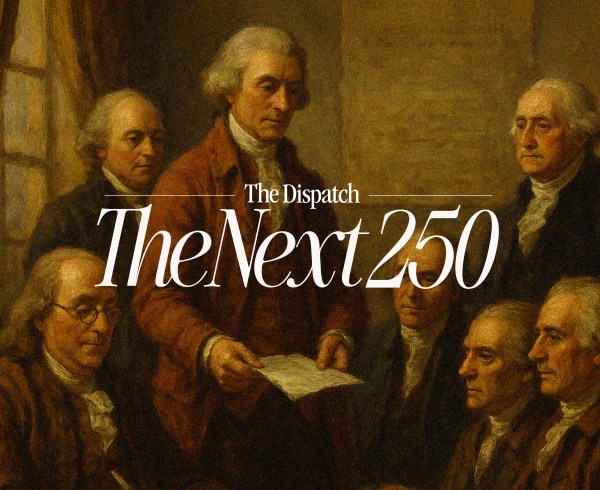How long does it take to prune a tree? This is the sort of question that might occur to you as you walk down Washington, D.C.’s Massachusetts Avenue, near historic Union Station, where chain-link fences have blocked off several small parks for months.
The first of these fences went up last August, adorned with a notice from the National Park Service: “Certified arborists have identified hazards from two declining Linden trees. These trees pose a potentially serious risk to public safety because of their condition, location, and the number of people who use the area. The park will be enclosed with fencing and will remain closed until the safety hazard and other resource damage is addressed.”
A couple months later, another fence at another park down the street, and another notice: This time the park was being closed “to remedy hazardous conditions and provide needed maintenance to the park,” and this space too would “remain closed until the safety hazard and other resource damage is addressed.”
The trees have been shorn, but the fencing remains. This might have something to do with the obvious unspoken reason for the closures: The two parks—first the one, then the other—had for the previous year been the sites of one of D.C.’s largest homeless tent encampments.
Although camping on public land is illegal in D.C., neither city nor federal police enforced the ban during the first year of the pandemic, citing Centers for Disease Control and Prevention guidelines that recommended “allow[ing] people who are living unsheltered or in encampments to remain where they are.” In fact, just the opposite occurred: The city began supplying basic services, including portable toilets and handwashing stations. (Encampments that sprang up on city land fall under the jurisdiction of D.C.’s city government, while other sites—like those along Massachusetts Avenue—are federal property under National Park Service jurisdiction.)
But as the pandemic dragged on and cities and states began moving away from the sort of short-term emergency measures that characterized that first year, that left police with a problem on their hands: how to resume enforcement against what were now basically small self-sustaining resident communities.
It’s a problem that’s bedeviled local governments far beyond D.C.’s. From Austin to Seattle, cities across the country that allowed encampments to spring up during the pandemic have allowed enforcement to lurch back into gear. “In many cities and suburbs nationwide, the tolerance by housed neighbors and business owners for homeless people remaining in place is over,” a Seattle Times reporter wrote last summer. “As the country has begun to reopen, metro areas from Portland, Oregon, to Manchester, New Hampshire, are implementing new camping bans, conducting new removals or grappling with the possibility of unsheltered homelessness as a permanent part of their landscapes.”
For a while, D.C. police simply looked the other way. But as complaints of crime and unsanitary conditions grew from residents and business owners in the neighborhoods surrounding the encampments, they began to take action last summer.
When city officials moved to clear encampments on city land, as they did with an encampment under the L and M Street underpasses in D.C.’s NoMa neighborhood in early October, they did so with as many concessions to advocates for the homeless as they could muster: The city had launched a pilot program to provide temporary housing vouchers and other social welfare resources to residents of the encampments they were clearing.
Some advocates argue these programs were rushed and insufficient, and that many people still fell through the cracks. Even the most skeptical had to concede they had a point after a front-loader bulldozed one tent with a man still inside, forcing the city to temporarily halt the closing of the camp.
“They didn’t get housing vouchers for everyone,” Beyoncé X., an organizer with Good Trouble Cooperative who goes by a pseudonym in her activism work, told The Dispatch. “There were multiple people who didn’t know where they were going to go next. And additionally, they violently cleared that encampment; they didn’t even check all of the tents properly—first off, to make sure that people weren’t in there, but they also have an obligation to inspect the tents to make sure that, like, any vital documents aren’t in there.”
At least city officials were up front about what they were doing, though. And fair-minded people can acknowledge in their actions at least an attempt to reconcile the competing desires of various resident factions in the city. You can’t say the same for the encampments that were closed by federal law enforcement on painfully obvious pretexts.
“I had tree trimming on my street a few weeks ago,” Beyoncé X. said. “They had the set date that they had for like a week, and they came and trimmed it, and that was a few hours and it was done.”
Closing the mini-parks indefinitely really serves only one purpose: absolving the Park Service itself, which plainly didn’t relish being caught between advocates for the homeless and other D.C. residents, of the responsibility of enforcing its ban on camping on an ongoing basis. (D.C. city officials have employed this strategy too, setting up concrete pylons along the site of the former underpass encampment to prevent any more people pitching tents.)
“If they make it impossible for tents to be there, then they don’t have to put up with the complaints from people who live in the neighborhood saying, why are there tents on the street I walk down every day?” Anne Marie Staudenmaier, an attorney at the Washington legal Clinic for the Homeless, told The Dispatch. “And they don’t have to follow through on their twice-a-week or once-a-week clearing schedules in those areas. It makes their life easier.”
NPS did not respond to a request for comment.
Some D.C. residents who chafed at the longstanding encampments may be relieved that local and federal law enforcement have taken action to enforce their own longstanding rules. But nobody should feel consoled about a government body that puts its own PR needs over the concerns of the people it serves and doesn’t even bother to think up reasonable excuses to cover its tracks.
“It’s ridiculous—it’s basically shrinking the amount of public space that’s available in the district,” Staudenmaier said. “And to me it’s a lazy remedy for what they see as an annoyance.”






Please note that we at The Dispatch hold ourselves, our work, and our commenters to a higher standard than other places on the internet. We welcome comments that foster genuine debate or discussion—including comments critical of us or our work—but responses that include ad hominem attacks on fellow Dispatch members or are intended to stoke fear and anger may be moderated.
With your membership, you only have the ability to comment on The Morning Dispatch articles. Consider upgrading to join the conversation everywhere.